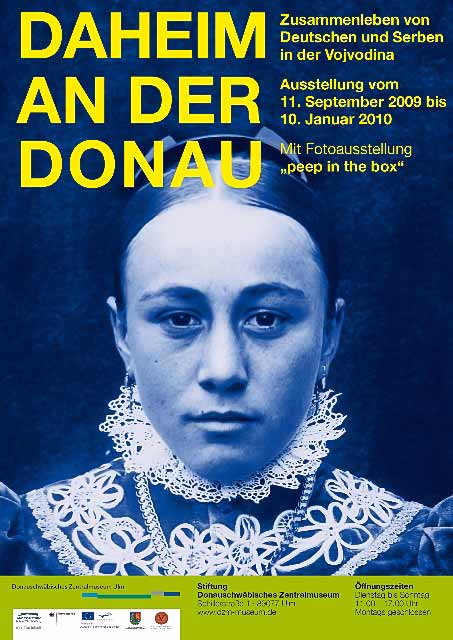At home on the Danube
Germans and Serbs living togetherin Vojvodina
09/12/09 - 01/10/10
Up until the Second World War, there were almost 400,000 Germans living in the region north of Belgrade, their ancestors in the 18. and Emigrated there in the 19th century. Until their expulsion in 1945, the Danube Swabians lived peacefully with Serbs, Hungarians and other ethnic groups in the villages and towns of Vojvodina as farmers, artisans or citizens.
For the first time, a German and a Serbian cultural institution worked on the common history in this region and presented their results to a wide audience here and there in an exhibition. The historians and museum experts had to agree on a common presentation of history: Not an easy undertaking given the difficult history of both ethnic groups in this region, which claimed tens of thousands of victims in the 20th century due to national-socialist and communist dictatorships.
The main focus of the exhibition was the representation of the coexistence and the mutual cultural influences of Danube Swabians and Serbs. On the other hand, the difficulties and tragic aspects in the history of Serbs and Danube Swabians were also worked through.
The exhibition was supported by the Landesstiftung Baden-Württemberg, the Federal Foreign Office of the Federal Republic of Germany and the Directorate General for Education and Culture of the European Commission.
The exhibition was a collaboration between the Danube-Swabian Central Museum and the Museum of Vojvodina in Neusatz/Novi Sad, Serbia.


